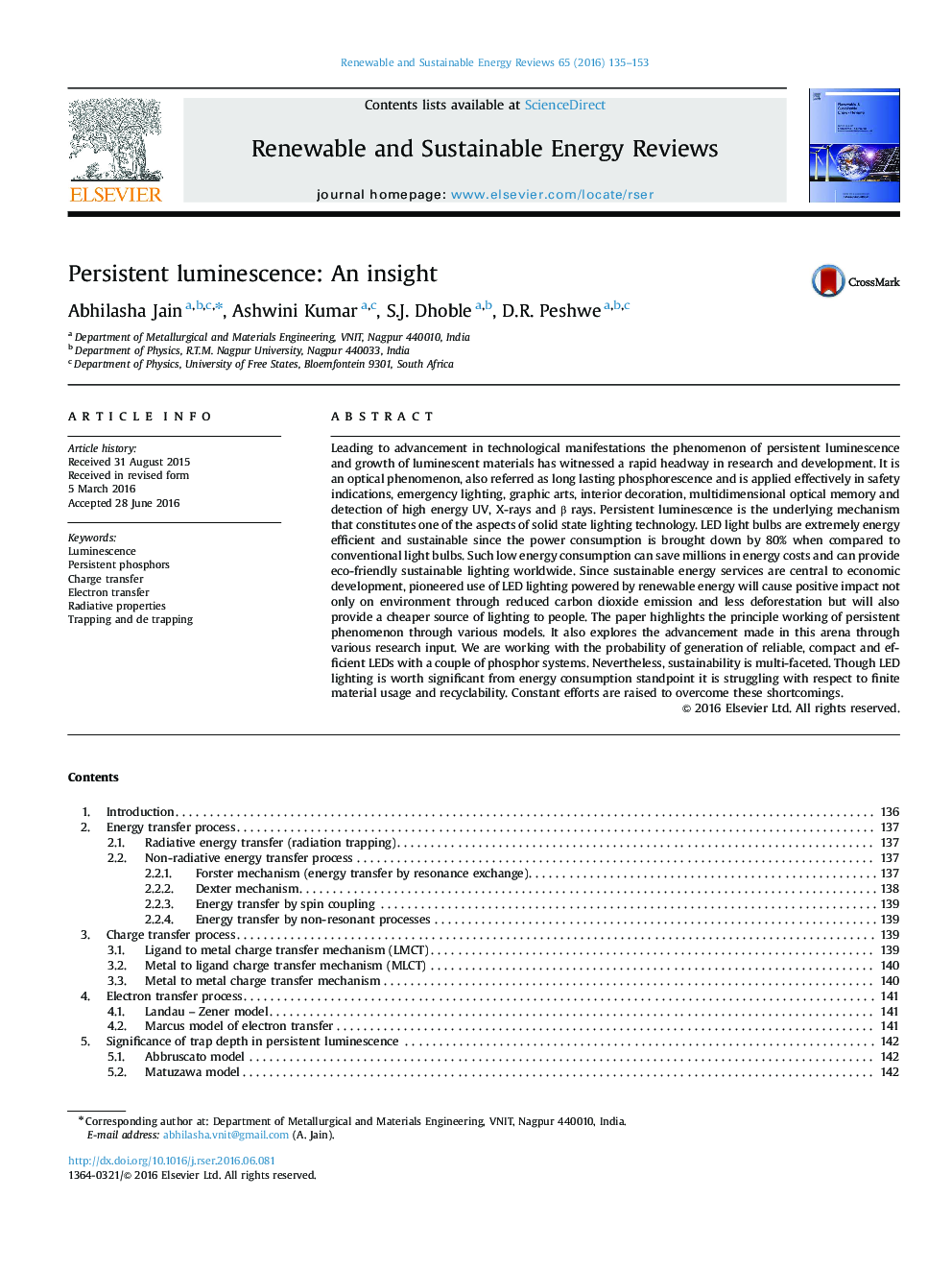| Article ID | Journal | Published Year | Pages | File Type |
|---|---|---|---|---|
| 8112667 | Renewable and Sustainable Energy Reviews | 2016 | 19 Pages |
Abstract
Leading to advancement in technological manifestations the phenomenon of persistent luminescence and growth of luminescent materials has witnessed a rapid headway in research and development. It is an optical phenomenon, also referred as long lasting phosphorescence and is applied effectively in safety indications, emergency lighting, graphic arts, interior decoration, multidimensional optical memory and detection of high energy UV, X-rays and β rays. Persistent luminescence is the underlying mechanism that constitutes one of the aspects of solid state lighting technology. LED light bulbs are extremely energy efficient and sustainable since the power consumption is brought down by 80% when compared to conventional light bulbs. Such low energy consumption can save millions in energy costs and can provide eco-friendly sustainable lighting worldwide. Since sustainable energy services are central to economic development, pioneered use of LED lighting powered by renewable energy will cause positive impact not only on environment through reduced carbon dioxide emission and less deforestation but will also provide a cheaper source of lighting to people. The paper highlights the principle working of persistent phenomenon through various models. It also explores the advancement made in this arena through various research input. We are working with the probability of generation of reliable, compact and efficient LEDs with a couple of phosphor systems. Nevertheless, sustainability is multi-faceted. Though LED lighting is worth significant from energy consumption standpoint it is struggling with respect to finite material usage and recyclability. Constant efforts are raised to overcome these shortcomings.
Related Topics
Physical Sciences and Engineering
Energy
Renewable Energy, Sustainability and the Environment
Authors
Abhilasha Jain, Ashwini Kumar, S.J. Dhoble, D.R. Peshwe,
